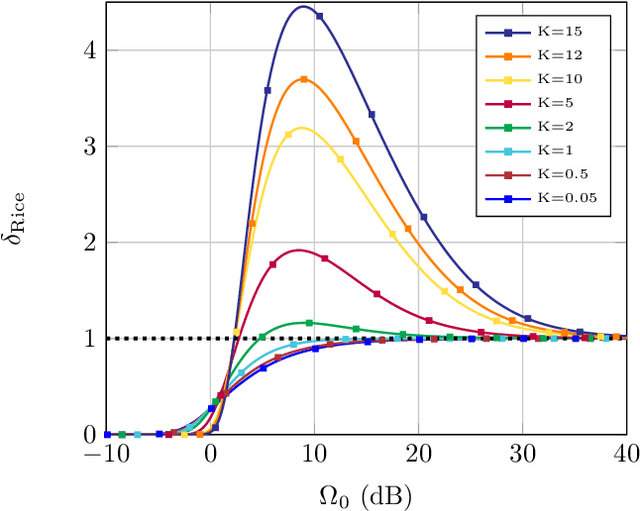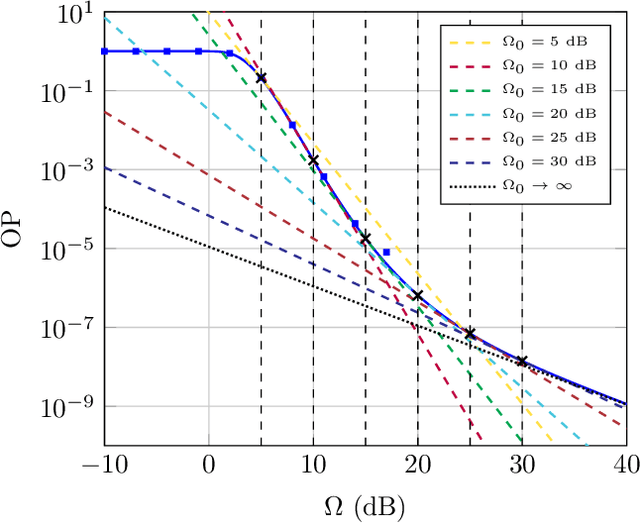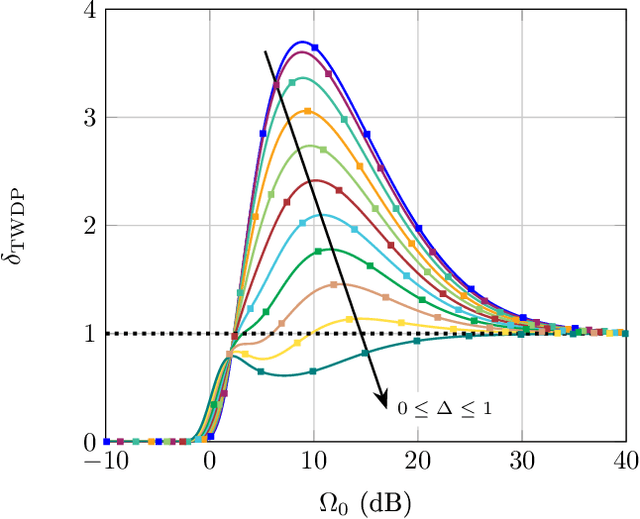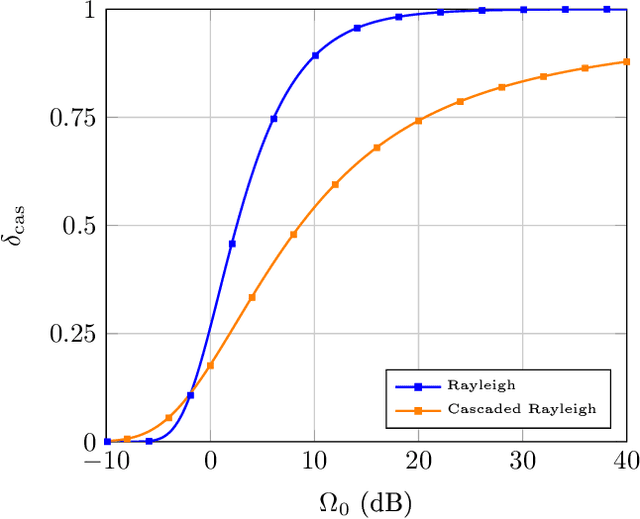Juan E. Galeote-Cazorla
How Should One Fit Channel Measurements to Fading Distributions for Performance Analysis?
Dec 04, 2024Abstract:Accurate channel modeling plays a pivotal role in optimizing communication systems, especially as new frequency bands come into play in next-generation networks. In this regard, fitting field measurements to stochastic models is crucial for capturing the key propagation features and to map these to achievable system performances. In this work, we shed light onto what's the most appropriate alternative for channel fitting, when the ultimate goal is performance analysis. Results show that average-error metrics should be used with caution, since they can largely fail to predict outage probability measures. We show that supremum-error fitting metrics with tail awareness are more robust to estimate both ergodic and outage performance measures, even when they yield a larger average-error fitting.
Experimental Assessment of Human Blockage at sub-THz and mmWave Frequency Bands
Nov 20, 2024



Abstract:The fifth generation (5G) of mobile communications relies on extremely high data transmissions using a large variety of frequency bands, such as FR1 (sub-6 GHz) and FR2 (mmWave). Future mobile communications envisage using electromagnetic spectrum beyond FR2, i.e. above 100 GHz, known as sub-THz band. These new frequencies open up challenging scenarios where communications shall rely on a major contribution such as the line-of-sight (LoS) component. To the best of the authors' knowledge, for the first time in literature this work studies the human blockage effects over an extremely wide frequency band from 75 GHz to 215 GHz given: (i) the distance between the blocker and the antennas and (ii) the body orientation. Furthermore, the obtained results are modeled with the classical path loss models and compared to 3GPP alternatives. The average losses increase from 42 dB to 56 dB when frequency rises from 75 GHz to 215 GHz. In terms of distance, a 18 dB increment in the received power is found when the Tx--Rx separation is increased from 1 m to 2.5 m. Finally, the blocker orientation induces variations of up to 4.6 dB.
Analytical Characterization of the Operational Diversity Order in Fading Channels
May 15, 2024



Abstract:We introduce and characterize the operational diversity order (ODO) in fading channels, as a proxy to the classical notion of diversity order at any arbitrary operational signal-to-noise ratio (SNR). Thanks to this definition, relevant insights are brought up in a number of cases: (i) We quantify that in line-of-sight scenarios an increased diversity order is attainable compared to that achieved asymptotically; (ii) this effect is attenuated, but still visible, in the presence of an additional dominant specular component; (iii) we confirm that the decay slope in Rayleigh product channels increases very slowly and never fully achieves unitary slope for finite values of SNR.
Empirical Validation of a Class of Ray-Based Fading Models
Jul 28, 2023Abstract:As new wireless standards are developed, the use of higher operation frequencies comes in hand with new use cases and propagation effects that differ from the well-established state of the art. Numerous stochastic fading models have recently emerged under the umbrella of generalized fading conditions, to provide a fine-grain characterization of propagation channels in the mmWave and sub-THz bands. For the first time in literature, this work carries out an experimental validation of a class of such ray-based models, in a wide range of propagation conditions (anechoic, reverberation and indoor) at mmWave bands. We show that the independently fluctuating two-ray (IFTR) model has good capabilities to recreate rather dissimilar environments with high accuracy. We also put forth that the key limitations of the IFTR model arise in the presence of reduced diffuse propagation, and also due to a limited phase variability for the dominant specular components.
 Add to Chrome
Add to Chrome Add to Firefox
Add to Firefox Add to Edge
Add to Edge